Use our boat explorer tool to learn more about all of the different types of fishing boats that are on the market. This way, you will be able to make an informed decision about which type of boat would be best for your and your family. Learn the unique features of each type of boat.
All Purpose Fishing Boats
These small fishing boats are intended for those who fish for just about everything.
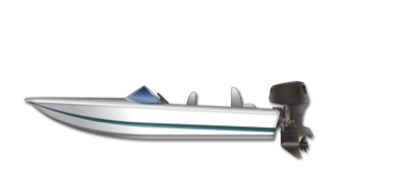
Average Length:15 to 20 ft
Capacity:5
Propulsion Type:Outboard engine, trolling motor
Trailerable:Yes
Hull Type:Varied
ABOUT ALL-PURPOSE FISHING BOATS
These small fishing boats, common in freshwater and saltwater, are intended for those who fish for just about everything. An all-purpose fishing boat will have a higher freeboard (sits higher in the water) than bass boats and have an easier time in rough water when pursuing largemouth bass, muskie and pike. The driver's area is simple; some small fishing boats even use a steer-by-tiller layout with spaces for fishing gear and several bench or pedestal-style seats. Livewells, rod lockers, a bow (front) or transom (aft or rear motor mounting position) trolling motor and powerful outboard power are the rule.
Bass Boats
Bass boats have low, sleek profiles and are built to fish with three anglers on board.

Average Length:16 to 25 ft
Capacity:5
Propulsion Type:Outboard engine, jet engine
Trailerable:Yes
Hull Type:Varied
BASS BOATS ARE A PRO'S CHOICE
Bass boats are built for getting to bass quickly. They usually have raised casting platforms in the bow, and quite often in the stern as well. Bass boats have low, sleek profiles and are built to fish with two or three anglers on board. They generally have larger outboard motors and more storage space than all-purpose fishing boats. Tournament-style boats are generally fiberglass and over 18 feet long with 150 to 250 horsepower. For casual angling and buddy tournaments, aluminum bass fishing boats from 16 to 18 feet with 25 to 150 horsepower are more common. Livewells to keep the catch alive are mandatory, as are depth and fish finders and an electric trolling motor on the bow.
Bowriders
Bowriders are designed for lakes and inland waterways, and are very popular boats.

Average Length:16 to 28 ft
Capacity:9
Propulsion Type:Outboard engine,sterndrive engine,jet engine
Trailerable:Yes
Hull Type:Vee, tri
BOWRIDERS
Bowriders are designed for lakes and inland waterways, and are the most popular boats in the runabout/sportboat category, thanks to the spacious seating in their open bow (front) area. Whether boaters want to ski, swim, fish or just dangle their toes in the water when at anchor, bowriders are a popular boat for many recreational water sports. Sterndrive power is the norm, but outboard engines are becoming increasingly popular for power.
Center Console Boats
This boat has multiple functions, you can use it for family outings as well as for fishing

Average Length:18 to 28 ft
Capacity:7
Propulsion Type:Outboard engine
Trailerable:Yes
Hull Type:Vee, cathedral, tunnel, various
CENTER CONSOLE BOATS OFFER VERSATILITY
Looking for a boat with multiple functions, one you can use for family outings as well as for fishing, and that is affordable? A center console boat is the one you're looking for. These open fishing boats are built to take rough offshore waters in pursuit of ocean fish, but are equally at home in coastal waters, lakes and rivers. A baitwell is necessary to keep live bait on board and fish lockers should be insulated to keep fish iced. An aluminum and canvas t-top provides shade and rod storage. Gunnel rod holders, outriggers and other gear are common fittings onboard a center console boat.
Dinghies
Dinghies are usually less than 10 feet long and they are easy to carry on top of a car.

Average Length:5 to 12 ft
Capacity:2 to 5
Propulsion Type:Outboard engine, paddle
Trailerable:Yes
Hull Type:Vee, flat, tri
DINGHIES
These small craft are usually less than 10 feet long and make a good companion boat for camping trips or for convenient use in fishing smaller waters. They're easy to carry on top of a car. They're also light enough to carry on board a cruiser to be rowed or motored ashore when the mothership cannot venture into the shallows.
Fish and Ski Boats
This popular style of bowrider allows you to fish, ski and cruise all in one afternoon.

Average Length:18 to 22 ft
Capacity:5
Propulsion Type:Outboard engine, jet engine
Trailerable:Yes
Hull Type:Vee, tri, multi
FISH AND SKI BOATS CAN DO IT ALL
This popular style of bowrider allows you to fish, ski and cruise all in one afternoon. You'll get all the comforts of a sportboat, such as spacious seating and a sunpad. But stowed away on fish and ski boats are the features it takes to pursue fish with a fury. A livewell replaces a storage compartment, and usually the sunpad area converts to a fishing platform with swivel seats. These family fishing boats even have a stowaway trolling motor to silently stalk the fish.
Flat Boats
These boats are popular in coastal areas where redfish, tarpon, permit and bonefish live.

Average Length:17 to 25 ft
Capacity:3
Propulsion Type:Outboard engine
Trailerable:Yes
Hull Type:Flat
FLATS BOATS (ALSO KNOWN AS SKIFFS)
These specialized boats are popular in coastal areas where snook, redfish, tarpon, sea trout, permit and bonefish live. With their flat hull design, they can float and run in water less than two feet deep while accommodating two to three anglers. A flats boat reserves little room for creature comforts like upholstered seating and carpet. Instead, there are large casting decks on the bow and stern, plus tackle storage, rod holders and livewells.
Houseboats
Houseboats are designed to offer lake house living on the water, ideal for families.
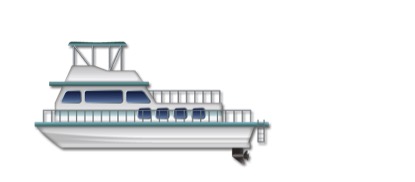
Average Length:25 to 100 ft
Capacity:Varies
Propulsion Type:Outboard engine, inboard engine, stern-drive engine
Trailerable:No
Hull Type:Various
HOUSEBOATS
Houseboats are designed to offer lake house living on the water, complete with spacious floor plans and modern amenities for entertaining, dining and sleeping. Houseboats are made for relaxing cruises, weekend getaways to boating destinations and unlimited family boating fun. Houseboats are best suited for rivers, lakes and coastal waterways, and are built in a wide selection of customizable sizes and styles.
Inboard Cruisers
These boats tend to be at least 30 feet long and have room for sleeping, and cooking.

Average Length:26 to 75 ft
Capacity:Varies
Propulsion Type:Inboard engine
Trailerable: No
Hull Type:Deep-vee
INBOARD CRUISERS
Inboard cruisers tend to be at least 30 feet long and have even more room for creature comforts like sleeping, cooking and plumbing facilities. They feature a simple drive mechanism located in the hull that is often considered easier to maintain in salt water. They are steered with a rudder rather than by turning a propeller drive mechanism and sometimes require more skill to manage.
Inflatable Fishing Boats
These boats serve many uses, including saltwater or freshwater fishing, or water sports.
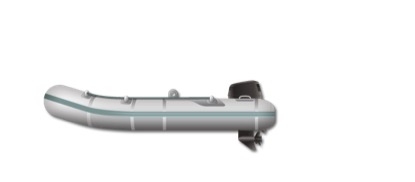
Average Length:8 to 30 ft
Capacity:6
Propulsion Type:Outboard engine, stern-drive engine, jet engine, paddle
Trailerable:Yes
Hull Type:Flat
INFLATABLE
Inflatable boats serve many uses, including saltwater or freshwater fishing, rowing, or water sports. They can also be used for emergencies. There are two categories of inflatable boats, roll-up inflatables or rigid-hull inflatable boats (RIBs), which share key benefits that distinguish them from other kinds of boats.
Jon Boats
Jon boats are simple, no-frills aluminum fishing boats that are easily portable.

Average Length:8 to 20 ft
Capacity:5
Propulsion Type: Outboard engine, paddle
Trailerable: Yes
Hull Type:Flat
FISHING ON JON BOATS
Jon boats are simple, no-frills aluminum fishing boats that are easily portable and popular with and anglers and hunters. These flat-bottomed aluminum fishing boats come equipped with bench seats and a simple, flat transom onto which may be clamped a tiller-steered outboard. Jon boats may be customized with fishing features such as trolling motors, driver consoles and sometimes carpeted floors. They are easy to maintain, inexpensive and nearly indestructible.
Multihull Cruisers
Multihull cruisers usually have two hulls and are more commonly called catamarans.

Average Length:16 to 30 ft
Capacity:8
Propulsion Type:Outboard engine, stern-drive engine
Trailerable: Yes
Hull Type:Catamaran, multihull
MULTIHULL CRUISERS
Multihull cruisers usually have two hulls and are more commonly called catamarans (two-hulled) or trimarans (three-hulled). They offer a wide, stable boat with a ride sometimes softer than vee-bottom hulls. A wide, airy main cabin is the trademark of catamaran cruisers along with lots of deck space for sunning. They typically offer onboard sleeping accommodations, plus ahead and galley. They are fuel-efficient and make excellent boats for saltwater and freshwater fishing, plus scuba diving adventures, long-range cruising and island hopping.
Multihull Powerboats
These boats are usually offered as an alternative to center consoles, and are very popular

Average Length:16 to 30 ft
Capacity:8
Propulsion Type:Outboard Engine, Sterndrive Engine
Trailerable:Yes
Hull Type:Catamaran, Multi-hull
MULTIHULL POWERBOATS
Catamarans are usually offered as an alternative to center consoles and are the most popular multihull boats around. In skilled hands, the two pontoon-like hulls give a softer ride than vee-bottom boats and offer similar stability at rest, making them excellent when carrying larger crews. Most catamarans are designed for hardcore angling, but some models offer recreational and cruising amenities.
Pontoons
Pontoons are economically priced, and usually equipped with smaller engines.

Average Length:16 to 30 ft
Capacity:15
Propulsion Type:Outboard engine, stern-drive engine
Trailerable:Yes
Hull Type:Pontoon
PONTOON BOATS TO ENJOY FISHING COMFORTABLY
Pontoon boats capture all the comfort of your living room, if your living room could float. They're equipped with couches, lounges and swivel seats that beckon boaters to sit back, put up their feet and enjoy the breeze, the sunset or whatever they want on the water. And when the family wants to drop a line in the water for some fishing, they're great for that too. Pontoons are economically priced with smaller engines. When equipped with higher horsepower, they offer relaxation plus speed with power for skiing and tubing too.
Sedan Bridge Boats
These boats have ample living accommodations, including AC, and an electrical generator.

Average Length:26 to 70 ft
Capacity:Varies
Propulsion Type:Inboard engine, stern-drive engine
Trailerable:Yes
Hull Type:Vee, deep-vee
SEDAN BRIDGE BOATS
Sedan bridge boats are essentially the same as a sportfishing yacht, but without the emphasis on the fishing part. Meaning the tuna lookout tower and fishing amenities have been exchanged for more deck space and creature comforts, like a swim platform. A helm in the cabin as well as on the fly bridge above give driving options for sunny or rainy days. They have ample living accommodations, including an electrical generator, AC and plumbing.
Sportfishing Boats
These boats are designed simply to make finding, hooking and landing fish easy for anglers

Average Length:26 to 100 ft
Capacity:Varies
Propulsion Type:Outboard ,Inboard ,Sterndrive Engines
Trailerable:Yes
Hull Type:Planing, Deep Vee, Various
SPORTFISHING BOATS
If you get a thrill out of stalking the giant monsters of the deep, these large boats exist just for you. The boat is designed simply to make finding, hooking and landing fish as easy as possible. Often equipped with sleeping berths, a galley for cooking and plumbing for convenience, they have the capacity to stay on the water for days.
Stern Drive Cruisers
Stern-Drive Cruisers are great for fishing, waterskiing and overnight cruising.

Average Length:20 to 40 ft
Capacity:10
Propulsion Type:Stern-drive engine
Trailerable:Yes
Hull Type:Vee
STERN-DRIVE CRUISERS
Great for fishing, waterskiing and overnight cruising, these popular boats have all the comforts expected from recreational cruising boats, including cooking and plumbing equipment. Powered by sturdy, steerable drive mechanisms, these cruisers usually range in size from 25 feet to 40 feet, making them most popular in inland waterways.
Walkarounds
Walkarounds are most popular in coastal waters and large bays, ideal for families.

Average Length:18 to 28 ft
Capacity:7
Propulsion Type:Outboard engine
Trailerable:Yes
Hull Type:Vee
WALKAROUND
Walkarounds may be the ultimate family fishing boats. They're most popular in coastal waters and large bays where anglers pursue salmon or offshore species, and on the Great Lakes chasing the likes of lake trout, king/Chinook salmon and steelhead. They're equipped with rod holders, livewells and steps to the forward deck to make it easy to follow a big fish around the boat. Walkarounds feature stowaway family seating, and a cozy cuddy with plumbing for a toilet and sink that make them a winner for cruising, swimming, tubing or skiing.
Aluminum Fishing Boats
Aluminum fishing boats are one of the best types of fishing boats for beginning boaters.
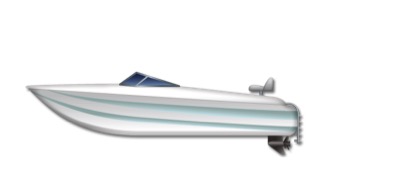
Average Length:8 to 24 ft
Capacity:6
Propulsion Type:Outboard engine
Trailerable:Yes
Hull Type:Varied
ALUMINUM FISHING BOATS ARE IDEAL STARTER BOATS
Aluminum fishing boats are one of the best types of fishing boats for beginning boaters because they are durable, lightweight, trailerable and easy-to-maneuver. Most often used in freshwater environments, aluminum fishing boats are powered by an outboard engine (usually no more than 90 horsepower) and utilize either tiller or remote steering. One of the main advantages of the best aluminum fishing boats is that they can navigate through narrow or shallow waterways such as ponds, coves, and streams -- areas that are inaccessible to larger boats. Aluminum fishing boats tend to be very popular with anglers because these types of small water areas are considered to be prime fish habitat.
Constructed with welded or riveted hulls, small aluminum fishing boats have limited passenger capacity and don't offer much in the way of high tech electronics, however they are economical and require less maintenance than boats built from fiberglass.
Since the best aluminum fishing boats are so easy to transport, once you have your boat registration in hand and have decided where to boat, it will be cinch for you to trailer to a local boat ramp. You will be on the water and catching fish before you know it!
Small Fishing Boats
These boats are very versatile, since most can be used in either fresh or saltwater.

SMALL FISHING BOATS ARE EASY TO TRANSPORT
Small fishing boats offer a great deal of versatility since most can be used in either fresh or saltwater and provide anglers with access to narrow inlets, bays, flats and shallow shorelines where many species of game fish prefer to feed. Due to the size of these types of fishing boats, they are much easier to transport and use for exploring different waterways.
When considering the ideal small fishing boat for you and your family, think about the areas you plan to fish, the species you prefer to catch, the number of passengers you will have on board, and where you intend to store the boat.
Powered by outboard engine, trolling motor or paddles, small fishing boats are a good choice for first-time boat owners. There are several different types that may fit your preferences and lifestyle.
Kayaks.Fishing kayaks are paddle-powered or pedal-powered small fishing boats that allow you to fish tight spots that a motorboat wouldn't be able to access. They are quiet, convenient, economical, 16 feet or less in length, and come in either sit-on-top or sit-inside models.
Inflatables.If you have a limited amount of storage or transporting space, an inflatable boat might be the best small fishing boat for you. Inflatables are made in sizes up to 30 feet.
Aluminum fishing boats.This is a small fishing boat, generally no greater than 24 feet in length, and can be transported using either a small, light trailer or by placing it on top of a truck rack. The smallest, simplest types of aluminum fishing boats are often called jon boats.
Flats boats.Small fishing boats that generally require less than and two feet of water to operate. These flat-bottomed boats are generally less than 25 feet in length and are most often used by saltwater anglers when fishing for species such as bonefish, snook or redfish.
Bass boats. These types of fishing boats are generally less than 26 feet in length and come equipped with large outboard motors and state-of-the-art livewell systems.
Jon boats. Jon boats are basic, inexpensive small boats that are constructed with aluminum flat-bottoms and bench seating. They are 20 feet in length or less and are easy to transport.
Small pontoon boats. Since pontoon boats are known for stability, small pontoon boats are a good choice for those who intend to take fishing trips with young children or grandparents.
Once you have narrowed down your fishing boat options, find out how to register your boat and where to boat near you.
Offshore Fishing Boats
Here are some important points to consider when selecting an offshore fishing boat.
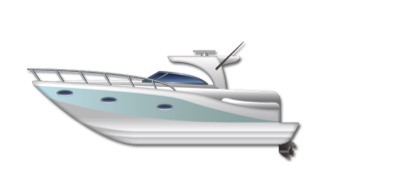
OFFSHORE FISHING BOATS FOR BIG GAME ANGLERS
If it's the thrill of blue water and big game fishing that you crave, there are offshore fishing boats made specifically for these kinds of deep sea fishing adventures. Most large offshore fishing boats, including multihull powerboats, come equipped for overnight trips and are constructed to handle tall waves. Center consoles and walkarounds are typically better types of fishing boats for day trips, or if you'd like to have the ability to trailer your boat to different launch locations.
Need help narrowing down the options when it comes to the best offshore fishing boats for the trips you intend to take? Here are some important points you may want to consider:
①Do you plan to take overnight trips? If so, look for an offshore fishing boat that has a large enough sleeping berth for you and your passengers.
②What type of hull design does the offshore boat have and how does it handle rough water? If you prefer to troll or make long runs, you may want to look at a deep vee or a multihull powerboat.
③Are the fishboxes on the boat large enough for the species you plan to catch and length of time you will be spending on the water?
④Does the boat have enough fuel capacity to get to the spots you want to fish and for the length of time you usually fish?
⑤Are there enough rod holders for the number of anglers you intend to take along on your trips?
⑥If the boat is outboard-powered, how wide is the transom? Anglers should be able to fight a fish without having to position themselves forward of the engines.
⑦Find out how much water the boat drafts. You will need to know where to boat given the water depth required to safely operate your vessel.
Once you have answered these questions, you will know more about which are the best offshore fishing boats for you and your needs. The next steps are to take a safe boating course, buy a boat, and then obtain your boat registration.
Fishing Kayaks
The majority of fishing kayaks are built as either sit-on-top models or sit-inside models.

Average Length:10 to 17 ft
Capacity:1
Propulsion Type: Man Power
Trailerable:Yes
Hull Type:Varied
THE VERSATILE FISHING KAYAK
Access to shallow or secluded areas, transportability and economy are three of the top benefits of owning a fishing kayak. A kayak can take you into prime fishing spots that are difficult, if not impossible, to fish with other types of fishing boats. If you have very limited storage space or want to travel with a kayak by way of RV or airplane, you may want to consider an inflatable fishing kayak that can be deflated and stored in a portable bag.
SIT-ON-TOP OR SIT-INSIDE KAYAKS
The majority of fishing kayaks are built as either sit-on-top models or sit-inside models. Most inshore kayak anglers tend to prefer sit-on-top fishing kayak models since it's easier to cast, change positions, or get out and wade when fishing on the flats. With a sit-on-top kayak, you sit on top of the kayak in a depression that is molded into the vessel with your legs and body exposed.
Sit-inside kayaks are designed so that you actually sit inside of the cockpit of the kayak with your legs under the deck. Anglers who fish in colder climates often use sit-inside kayaks because they offer a drier ride.
KAYAK LENGTH AND WIDTH
If you prefer the adrenaline rush of offshore kayak fishing for large game fish, you will want to think about waterline length when determining which will be the best fishing kayak for deeper water and longer distances. Generally, the longer the waterline length, the faster the kayak will go. This means that if you anticipate having to paddle long distances to get to your favorite fishing locations, a 15 or 16-foot fishing kayak will get you there faster than a 10 or 12-foot kayak. In reference to width, a wider kayak offers additional stability, but can also be more cumbersome.
Regardless of the kayak you choose, safety should always come first when on a fishing kayak or any other type of boat. Even though fishing kayaks are operated using paddle power, it's still a good idea to review the boating regulations in your state.

